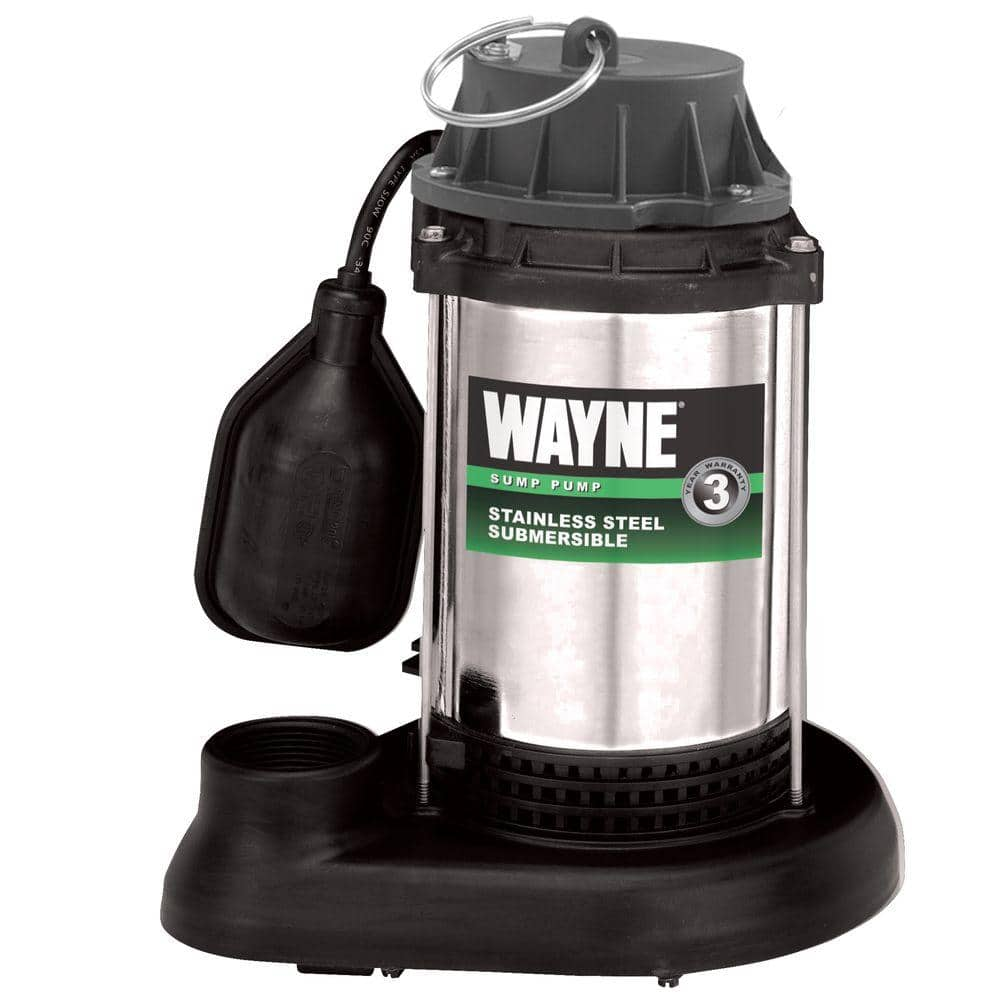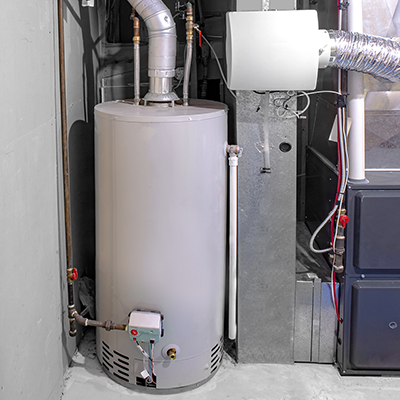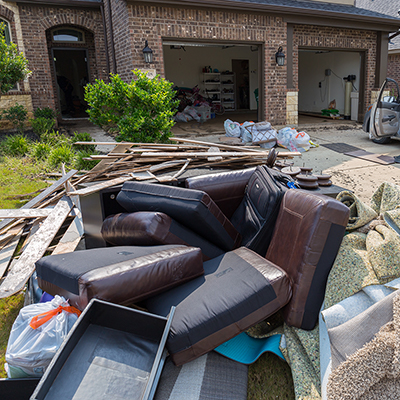Best Sump Pumps for Your Basement or Crawlspace

Published December 22, 2023
Sump pumps can save you thousands of dollars in flood damage. They are ideal for parts of the country that experience heavy rain and for houses built on flat or low-lying areas. Keep your home protected by learning about the various types of pumps and how to choose the best sump pumps for your home or office.
This guide will break down what a sump pump is, how do sump pumps work and will help you answer questions such as, what size sump pump do I need?
Tip: Choose corrosion-free housing materials, consider water capacity and know the height water has to be lifted for removal.
Table of Contents
What is a Sump Pump?
Are Sump Pumps Always Necessary?
Sump Pump Types
Pump Switches
Installation Considerations
Features to Consider
What is a Sump Pump?

A sump pump is used to move water away from the foundation and basements of structures, particularly homes. Typically the pump sends the water to a drain point that is 10 to 20 feet away from the home, depending on local building codes.
A sump pump consists of six main components:
- Ground Water Collection System: This routes excessive groundwater to a sump basin.
- Sump Basin or Pit: A hole that sits below the basement floor. It collects liquid for removal and holds the sump pump.
- Primary Sump Pump: A 1/3-horsepower to 1-horsepower pump. It uses valves that sense water levels or pressure. When water reaches a preset level in the basin, the machine immediately pumps it out.
- Discharge Pipe/Hose: This open valve or pipe run carries discharge water away from the home.
- Check Valve: Allows water to flow only in a single direction. This prevents backflow through the discharge outlet.
- Backup Sump Pump System (optional): A battery-operated secondary pump system. It provides added protection in case of a power failure or if the primary pump fails. Some backup systems are water-powered.
The proper sump pump size for your property is determined by a few factors, including the depth of the basement, the depth to groundwater and the area the pump is expected to drain.
Most homes in areas with an average water table can use a 1/3-HP sump pump. This amount of horsepower can lift water 7 to 10 feet. However, many people opt to install a 1/2-HP pump. The difference in costs is usually negligible, and a 1/2 HP unit will handle up to 40 percent more water than the smaller unit, pumping about 10 to 15 feet of lift.
Homes that sit in a floodplain or a low-lying area, or home that have deep basements should consider 3/4- to 1 HP sump pumps. These provide up to 25 percent more power than a 1/2 HP model, providing 20 to 30 feet of lift. This additional power also come in handy if the water has a longer horizontal run (150 to 200 feet) to the drainage point.
Are Sump Pumps Always Necessary?

The landscape outside a home or business can make a sump pump a necessity. If the ground slopes toward the structure or if the soil type surrounding the property makes drainage difficult – such as heavy clay soil or silt – a sump pump is an excellent investment.
Any structure that has a basement, particularly a finished basement, should have a sump pump installed. This will safeguard against emergency flooding and prevent possible water damage.
A crawlspace foundation should have an installed sump pump. Crawlspaces are highly prone to moisture problems and may easily hold standing water. A sump pump can help regulate the humidity and mitigate mold growth.
Most homeowners’ insurance policies do not cover water damage. A well designed sump pump system, maintained properly, can help keep your home’s basement dry and prevent expensive damage and mold from water intrusion for up to 10 years.
Sump Pump Types

The two primary types of sump pumps are pedestal and submersible. We’ve included a third type, battery backup sump pumps, because they’re useful in emergencies. For everyday use, select either a pedestal or submersible sump pump.
Pedestal sump pumps have the motor above the waterline. They’re louder than submersibles, but you can add a lid to soften the noise. You can choose cast iron for durability, or plastic, which gives you more power at a lower cost. Pedestal sump pumps cannot handle debris like leaves or pebbles in the water.
Submersible sump pumps work entirely underwater. Because of this, they’re generally quieter than pedestal sump pumps. Submersibles support stronger motors that help withstand extended short-term use. Like pedestal sump pumps, cast iron offers more durability. This type is strong enough to expel debris like leaves or pebbles in the water.
Battery backup sump pumps are necessary if your home is prone to power outages during thunderstorms. This system runs on dedicated battery, rather than the home’s electrical grid. As long as the battery is maintained and kept charged, the backup pump will take over from the main pump if it fails. Even without loss of power in your home, a backup sump pump can lessen the strain on a primary pump.
Tip: If your home has been affected by flooding or other water damage, you can find remediation and restoration tools and equipment at The Home Depot Tool Rental Center. Rent submersible pumps, dehumidifiers and other equipment to help get your home back to normal.
Pump Switches

Pump switches turn the unit on and off, and there are many different types.
- Capacitive switches use a microprocessor to measure water level and engage the pump when the water level reaches a preset point in the sump basin.
- Vertical switches are a mechanical device that automatically turns a pump on and off when water reaches a preset level.
- Diaphragm switches are a mechanical device that uses water pressure levels to turn a pump on and off.
Installation Considerations

Once you have selected the best sump pump for your basement, proper installation is important to ensure the pump works correctly from the start.
- Always read the owner's manual before installing.
- Consult an electrician for rewiring.
- Research local code requirements for water discharge.
- Always disconnect power prior to working on a sump pump.
- Install on a dedicated GFCI protected outlet.
- Never use extension cords with pumps.
Features to Consider

The best sump pumps for basements should have features that help them run longer and more efficiently.
- SSPMA Standards: Look for a pump that conforms to the standards of The Sump and Sewage Pump Manufacturers Association.
- Water-Powered Pumps: Uses city water pressure to pump water. Not designed to handle large quantities of water.
- Corrosion-Resistant Construction: Enables pumps to withstand the rigors of long-term use.
- Sump Pump Alarm: This device monitors the water level and can use Wi-Fi to alert the homeowner when the water level rises, indicating a problem with the pump. Some more advanced systems can monitor power to the pump and send alerts when the machine has lost power.
Sump Pump Maintenance

Even the best sump pumps will not perform well unless they are maintained. Regular checking and cleaning of your sump pump is crucial. A poorly maintained or damaged pump can fail when it is needed most, resulting in water damage that can be costly to remediate.
Monthly Maintenance
- Clean out the pump inlet screen
Quarterly Maintenance
- Disconnect the power and remove standing water from the sump pit.
- Remove any debris from the pit and the inlet screen.
- Check the power cord for any damage.
- Reconnect the pump, then pour water to check that the float switch is working. Make sure it is accurately activating the pump and turning it off.
- Follow the drainage path and make sure all the drain pipes are working correctly. Water should be flowing out at least 20 feet from the house.
- Call a plumber if you note any damaged pipes or if the float switch is not operating correctly.
Annual MaintenanceOnce a year, as you perform the normal quarterly maintenance, include a checkup of the backup sump pump system. Check to ensure the battery is holding a charge.
You may find it helpful to have both systems serviced professionally on an annual basis.
Need help identifying a water pump, pump switches, tools or other materials so you can install the best sump pumps for your home? Find products fast with the image search feature in The Home Depot Mobile App. Snap a picture of an item you like, and we'll show you similar products.































